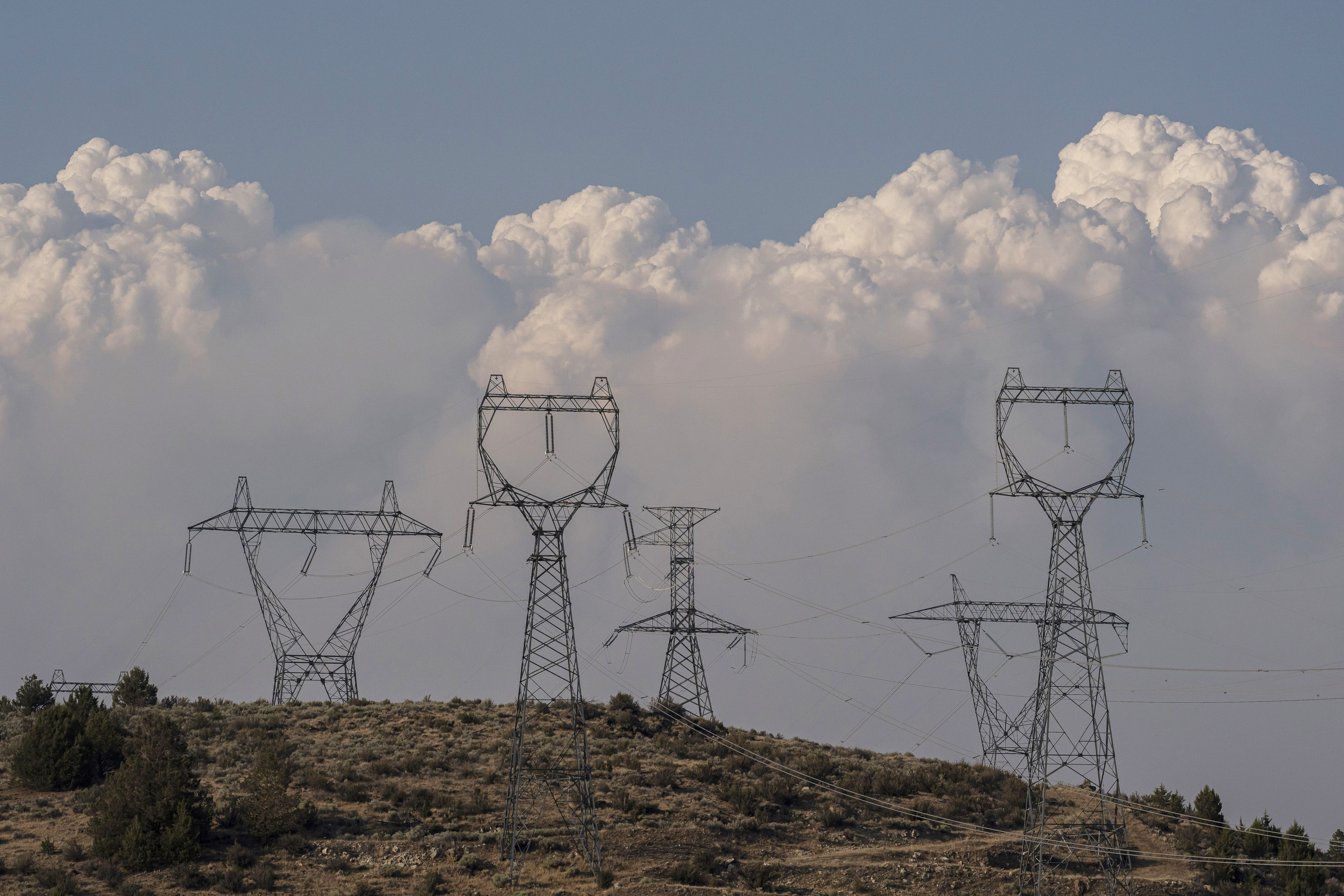
FILE - Smoke plumes from the Bootleg Fire rise over power lines on July 12, 2021, near Klamath Falls, Ore. Oregon utilities began shutting down power to thousands of customers on Friday, Sept. 9, 2022.
Nathan Howard / AP
Pacific Power filed a rate increase proposal in Oregon last week, which seeks a 17.9% average increase in energy rates. The company says for average residential customers, their bill would increase by $29.47 per month.
This increase would only affect customers in Oregon. The company also serves smaller areas in Washington state and Northern California.
Pacific Power says the major reason for this rate increase is to fund transmission infrastructure improvements, investments in green energy and wildfire mitigation.
Bob Jenks with the Oregon Citizens’ Utility Board said his group is concerned about the impact on customers, which would take effect in January 2025.
“It’s gonna cause a lot of damage,” he said. “It’s gonna be really difficult for customers to absorb this, particularly in the middle of winter.”
The proposal first has to be approved by the Oregon Public Utility Commission.
Related: Pacific Power seeks 17% Oregon rate hike
Pacific Power did not agree to a recorded interview, but in an email, spokesperson Simon Gutierrez said the utility offers rate discounts and alternative billing options for customers.
“Pacific Power remains committed to actively managing its system in the face of rising costs to limit price exposure and reduce cost volatility for our customers,” he said.
A major portion of this increase is to address wildfire risk and future liability if wildfires are started by Pacific Power equipment.
Pacific Power agreed to a $299 million settlement last year for lawsuits related to the 2020 Labor Day wildfires in Oregon. The company’s insurance costs have also skyrocketed. In the rate proposal, it said that total costs for liability last year were over $122 million, up from just $33 million in 2022, and $3 million in 2018.
Jenks said his biggest concern is that consumers will be expected to cover such costs.
Pacific Power owned by Warren Buffett’s company
Pacific Power is owned by Berkshire Hathaway, the company co-founded by Warren Buffett, one of the world’s richest people.
“They have more money than God on their side,” Jenks said. “So it really is something where we have to look at a much different allocation of liability costs than what the company is proposing here.”
Oregon customers would be expected to pay up to $77 million a year into a proposed “Catastrophic Fire Fund.” The fund has a goal of raising $3 billion, and would cover Pacific Power’s liability for wildfires beyond what its insurance would cover.
Related: Portland General Electric hikes residential rates by record 18%
The company itself would be responsible for 20% of that fund, plus a deductible per event. That means its customers would be responsible for contributing the remaining $240 million per year, spread across Oregon, Washington and California.
“Absent a mechanism to address these threats, utilities will be faced with significant increases in the costs to finance everyday operations,” Gutierrez said.
This is the third rate hike the company has proposed in Oregon since 2019. The commission approved a 4% increase in 2022.
The California Public Utilities Commission approved a 17.5% increase to Pacific Power’s operations in that state late last year. That’s lower than the company’s originally proposed 25.7% increase.
Jenks said approval by the Oregon commission could take all year. The last approval wasn’t finalized until just a few weeks before it was set to take effect.


